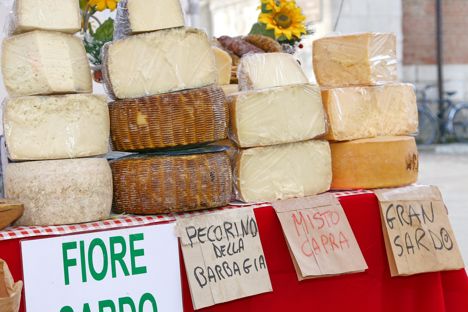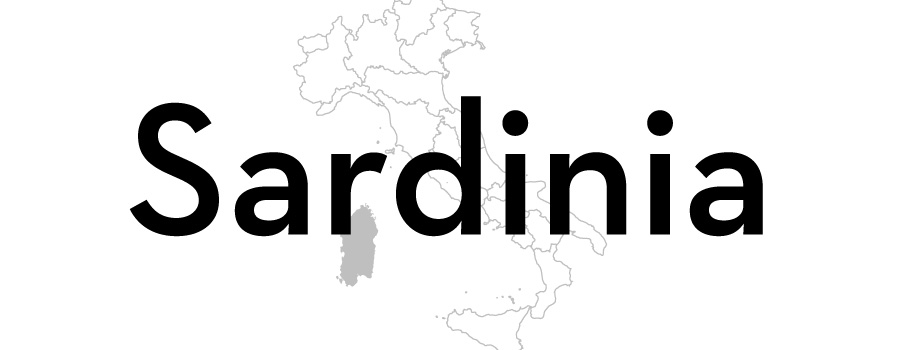
The cheeses of Sardinia
Luciana Squadrilli introduces nine of the most unusual, delicious and downright disturbing cheeses made on the island of Sardinia, utilising everything from powdered clay and olive oil to maggots and goat stomachs.
The cheeses of Sardinia
Luciana Squadrilli introduces nine of the most unusual, delicious and downright disturbing cheeses made on the island of Sardinia, utilising everything from powdered clay and olive oil to maggots and goat stomachs.
With rugged mountains sitting alongside green meadows and fertile valleys, since ancient times the beautiful island of Sardinia has been known for the quality of the milk from its local animals and for the mastery of its cheesemakers.
Over the centuries, many of them had to emigrate abroad or to different Italian regions, but they continued to make incredible cheese, including the intensely savoury Pecorino Romano in Lazio – an essential ingredient for many Roman classics such as Amatriciana and trippa alla Romana. When they eventually returned home, they continued to produce it, which is why the PDO-protected Pecorino Romano so associated with Roman cuisine can also be made in Sardinia. Today, the cheese is one of the island’s most appreciated gastronomic treasures.
However, there are many other cheesy gems to be found in Sardinia. Some of them are well-known, while others are hidden treasures still to be discovered by the foodie universe, mostly made and consumed in country farms and remote villages. Some even face the danger of extinction, as they’re very unusual not just to make, but to eat too.
These are some of the most renowned and most obscure (some would say extreme!) cheeses of Sardinia.
Axridda
Traditionally made in the Nuoro province of the island, this sheep’s or goat’s milk cheese takes its name from an ancient technique used to preserve cheese made in the winter or spring, so it could be kept throughout the long and hot summer. Once the cheese is partially mature, after at least three months, a thin layer of clay (argilla in Italian, axridda in Sardinian) powder is spread over the moistened crust (or mixed with olive or mastic oil). The result is a hard, slightly crumbly cheese with an intense flavour.
Callu de Crabettu
This is a pretty challenging cheese to both eat and make. The stomach of a young goat filled with its mother’s milk is sealed with twine and left to mature, so that the milk inside curdles and turns into a sort of intense, pungent paste. An ancient product made by Sardinian shepherds who could easily transport it along their journeys, Callu de Crabettu is usually eaten (both the inside and the outside) spread on bread or fried in pork lard. It can also be used to add flavour to pasta or rice.
Casizolu
stretchedcurd cheese made from cow’s milk. Traditionally made by women in the Montiferru area (near Oristano, where the eponymous extinct volcano massif stands), Casizolu is protected by the Slow Foods Presidia. Usually eaten after a few months of maturing, it has green, grassy notes and a buttermilk flavour. If matured for longer, it gets a more intense aroma and is so pungent it can cause a prickling sensation in the mouth. In some areas of the island Casizolu is made with sheep’s milk. This is eaten fresh and is known as pirittas (small pears).
Casu axedu (also called Frughe, Frue or Merca)
This is a rich, soft cheese, which can be eaten both fresh or matured. Made with sheep’s or goat’s milk, it was – and still is – traditionally made by Sardinian people also at home. To make Casu Axedu (literally meaning ‘sour cheese’), you have to follow an unusual process. After adding the rennet and a little bit of the whey from the previous day’s cheesemaking, it’s left to curdle for few hours, before being preserved in brine for twenty-four hours before eating. This is how this soft and sweet cheese turns into an intensely tasty and pungent one. When fresh, it is usually served to accompany salads and vegetables or spread over local bread. Once matured, Casu Axedu becomes hard and can be grated to add flavour to soups and pasta dishes.
Casu marzu
It takes courage to taste this peculiar (and for some, stomach-churning) cheese, cherished as one of Sardinia’s most traditional foods and considered a local culinary institution. Initially made as a ‘normal’ Pecorino cheese that’s soft, moist and not too salty, it is infested by cheese flies which lay their eggs inside. Once born, the larvae start eating the cheese and over the months transform it into a creamy, pungent paste. The maggots in the cheese are still alive and (literally) kicking and one can’t help eating some of them along the cheese.
Fiore Sardo PDO (also known as Pecorino Sardo)
Made since ancient times by Sardinian shepherds from the inner areas of the island, this tasty hard Pecorino cheese is made from unpasteurised local sheep’s milk (although today some industrially made versions use a blend of cow's and sheep's milk, or even pasteurised milk). The wheels of cheese were originally put in wooden (now stainless steel) moulds. After a first maturation in brine, they are gently smoked over wood, creating its characteristic intense flavour whilst retaining the sweet taste of the milk.
Fresa de Attenzu
Sardinia is best known for its matured hard cheeses, but there are also plenty of interesting soft cheeses. Fresa de Attenzu, made exclusively in the areas of Nuoro and Oristano, is one of them. It is produced with cow’s (and sometimes sheep’s) milk at the end of autumn. The small round wheels have a soft, creamy texture similar to stracchino cheese, with a slightly more acidic flavour.
Pecorino di Osilo
One of the many different Pecorino cheeses made in Sardinia,this rich and intense hard sheep’s milk cheese is known for being extraordinarily smooth.This is due to the long maturing time, when the cheese is washed with water and brine before being rubbed with olive oil. It’s also pressed for a long amount of time during production, which helps keep it uniform and firm. Only made in some villages near Sassari (including Osilo), it is protected by the Slow Food Presidium.
Trizza
A tasty – and beautiful –string cheese to be eaten a few days after production, Trizza is made with the milk from the local Sardo-Modicana cows in the Montiferru area. Some say its name refers to the braided shape of a treccia, although others believe it is derived from an ancient Byzantine word, Thiriccas. Traditionally consumed during Lent, it is sometimes woven into elegant and traditional shapes.



